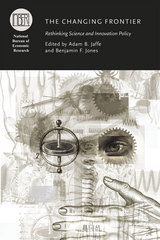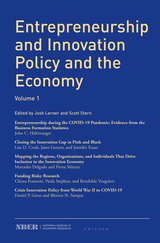2 books about Innovation Policy

The Changing Frontier
Rethinking Science and Innovation Policy
Edited by Adam B. Jaffe and Benjamin F. Jones
University of Chicago Press, 2015
In 1945, Vannevar Bush, founder of Raytheon and one-time engineering dean at MIT, delivered a report to the president of the United States that argued for the importance of public support for science, and the importance of science for the future of the nation. The report, Science: The Endless Frontier, set America on a path toward strong and well-funded institutions of science, creating an intellectual architecture that still defines scientific endeavor today.
In The Changing Frontier, Adam B. Jaffe and Benjamin Jones bring together a group of prominent scholars to consider the changes in science and innovation in the ensuing decades. The contributors take on such topics as changes in the organization of scientific research, the geography of innovation, modes of entrepreneurship, and the structure of research institutions and linkages between science and innovation. An important analysis of where science stands today, The Changing Frontier will be invaluable to practitioners and policy makers alike.
In The Changing Frontier, Adam B. Jaffe and Benjamin Jones bring together a group of prominent scholars to consider the changes in science and innovation in the ensuing decades. The contributors take on such topics as changes in the organization of scientific research, the geography of innovation, modes of entrepreneurship, and the structure of research institutions and linkages between science and innovation. An important analysis of where science stands today, The Changing Frontier will be invaluable to practitioners and policy makers alike.
[more]

Entrepreneurship and Innovation Policy and the Economy
Volume 1
Edited by Josh Lerner and Scott Stern
University of Chicago Press Journals, 2022
Entrepreneurship and innovation are widely recognized as key drivers of long-term economic growth. Understanding the forces that influence them is essential for policy design. Building on the twenty-year legacy of the NBER Innovation Policy and the Economy series, Entrepreneurship and Innovation Policy and the Economy showcases recent research on entrepreneurship and entrepreneurship policy. The volume reports on five research projects. First, leveraging detailed data from the Business Formation Statistics, John Haltiwanger documents a striking uptick in new business formation during the pandemic, and considers the future economic impact of this renewed rate of business dynamism. The next two chapters focus on disparities in the degree of inclusion of women and people of color in innovation and entrepreneurship. Lisa Cook, Janet Gerson, and Jennifer Kuan examine the history of unequal access to education, training, and the practice and commercialization of invention, and the subsequent loss in innovative capacity and productivity. They also consider the potential effects of policies that address these inequalities. Mercedes Delgado and Fiona Murray complement this analysis by characterizing and analyzing the gender gap in patented innovation, including the substantial variation in inclusion of women across locations, industries, and individual firms. The remaining chapters focus on the organization of research and commercialization. Chiara Franzoni, Paula Stephan, and Reinhilde Veugelers consider the operation of current research funding systems with regard to risky research projects. They also describe the consequences of documented biases against novelty in funding decisions in the context of research on mRNA technology. Drawing on historical lessons from World War II as well as current analysis of innovation policy during COVID-19, Daniel Gross and Bhaven Sampat consider the unique challenges that arise when a crisis necessitates unusually rapid innovation and the deployment, at scale, of research findings.
[more]
READERS
Browse our collection.
PUBLISHERS
See BiblioVault's publisher services.
STUDENT SERVICES
Files for college accessibility offices.
UChicago Accessibility Resources
home | accessibility | search | about | contact us
BiblioVault ® 2001 - 2024
The University of Chicago Press









